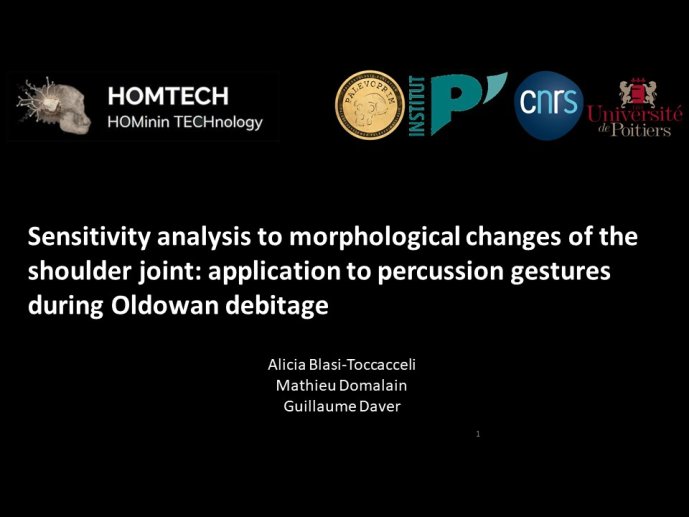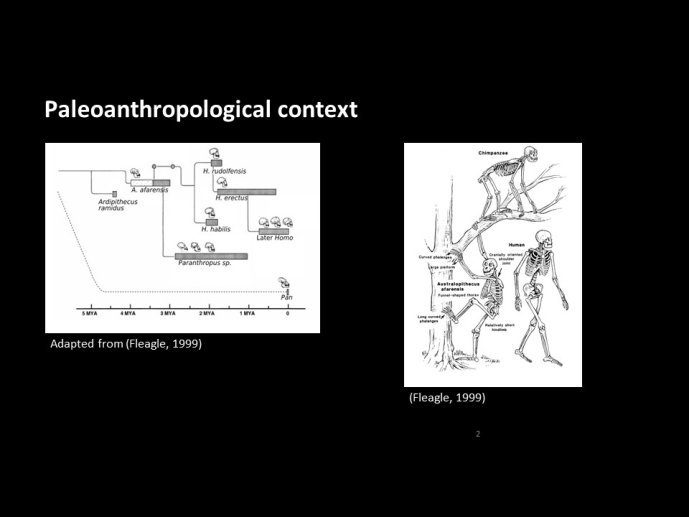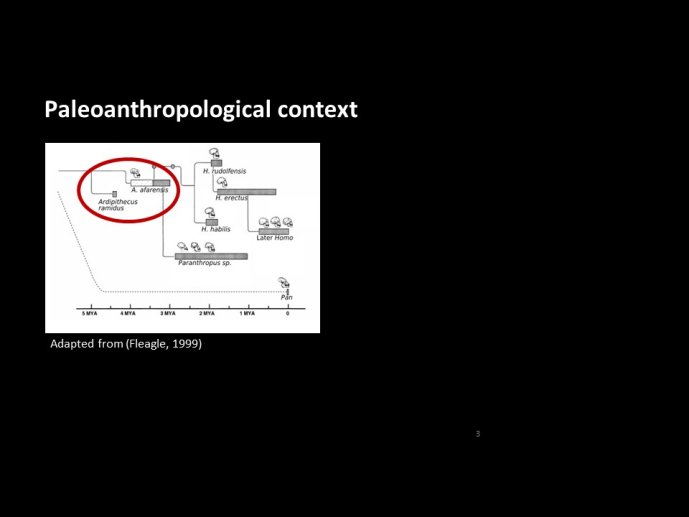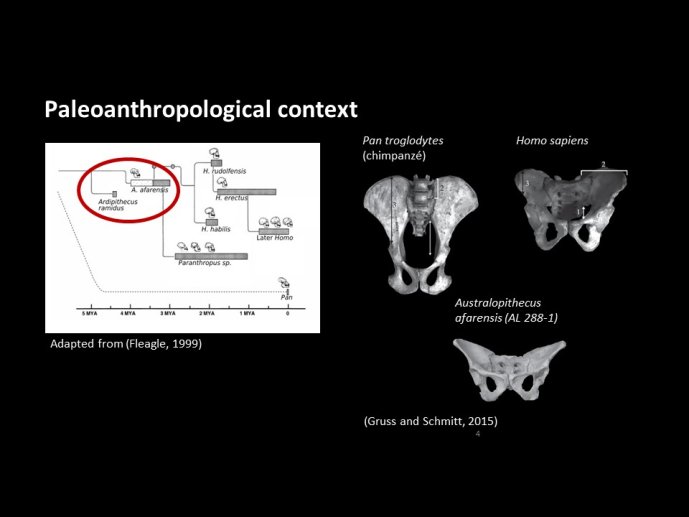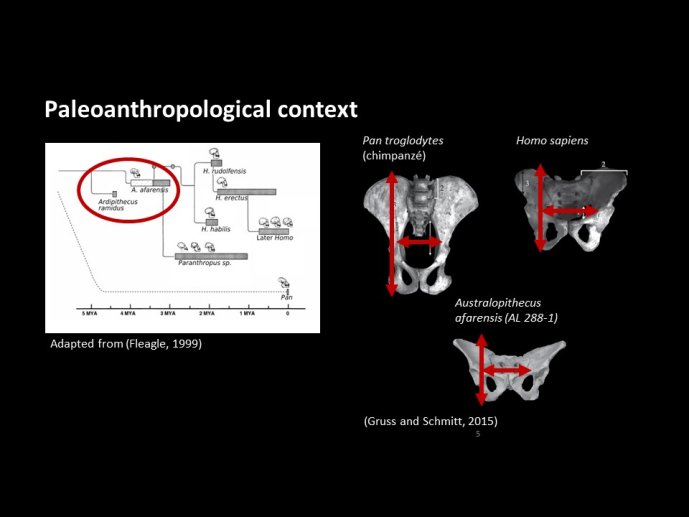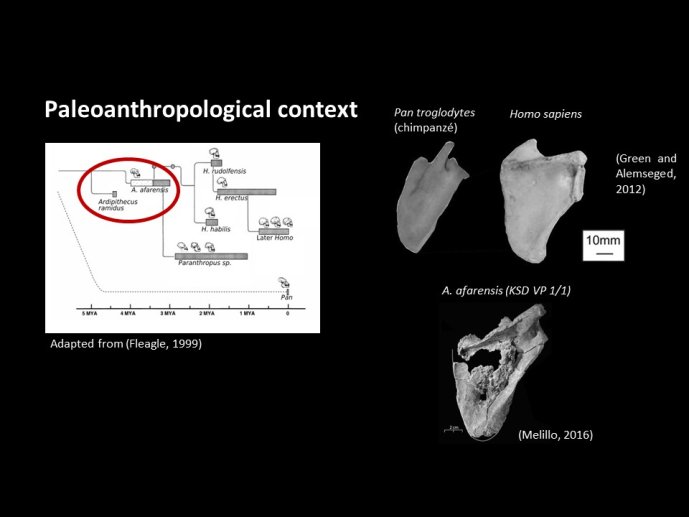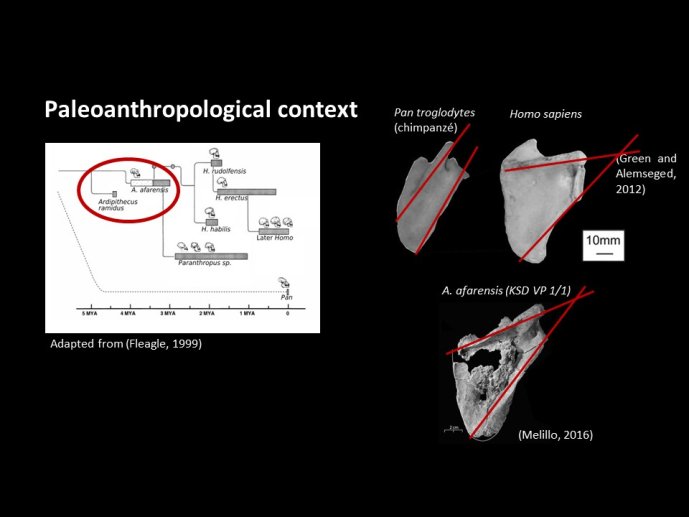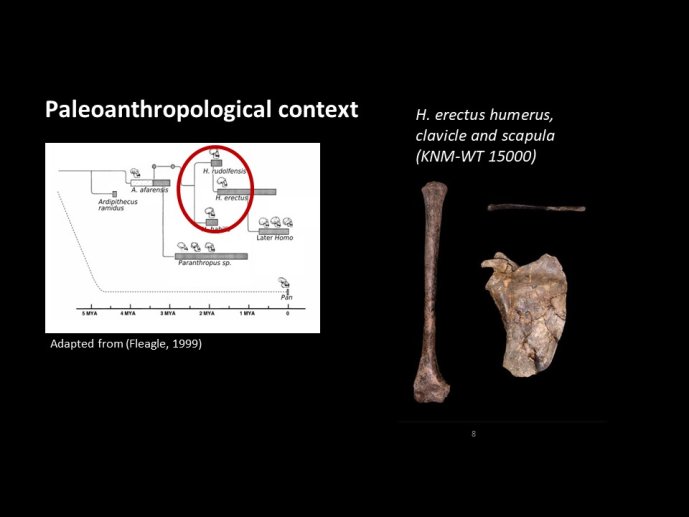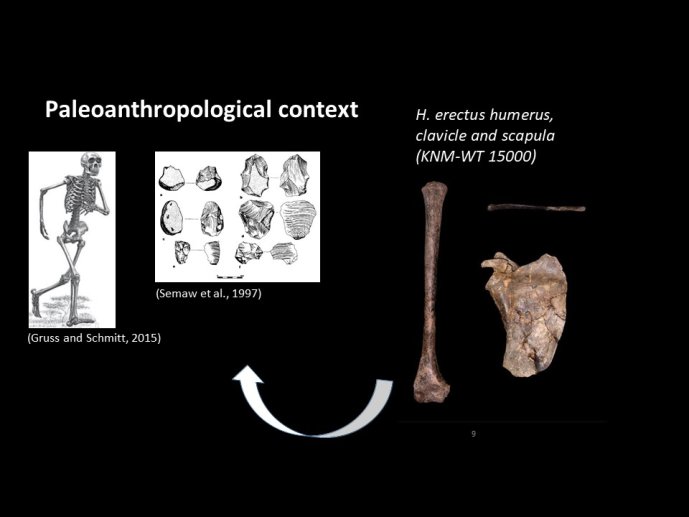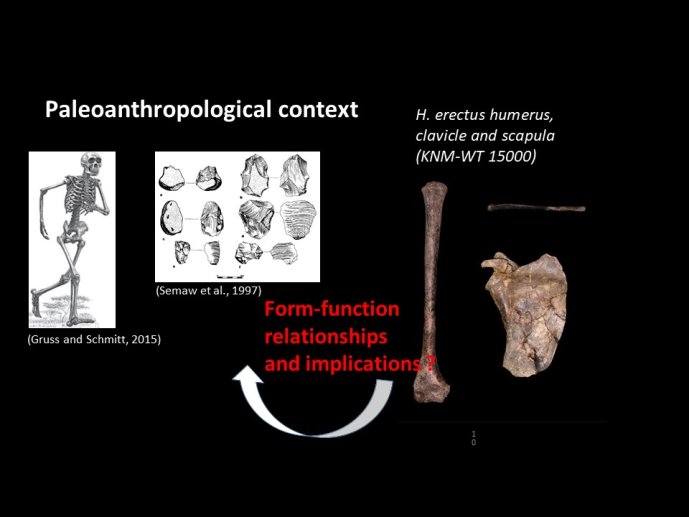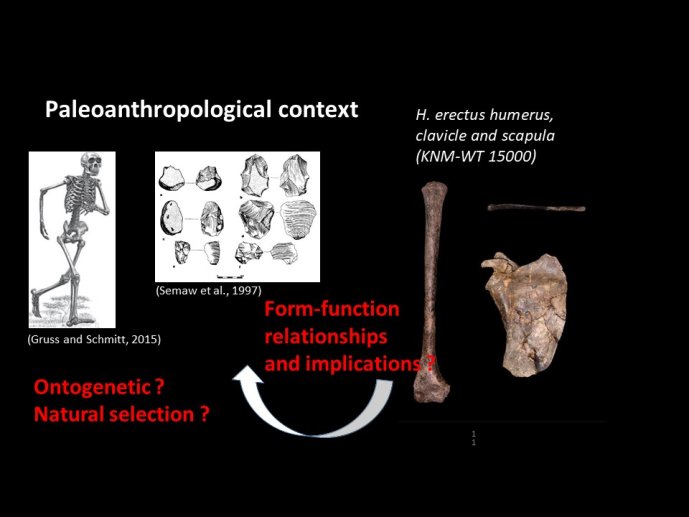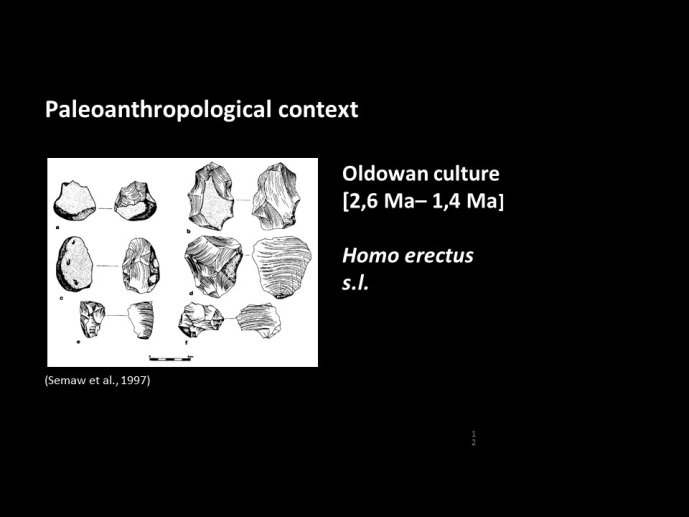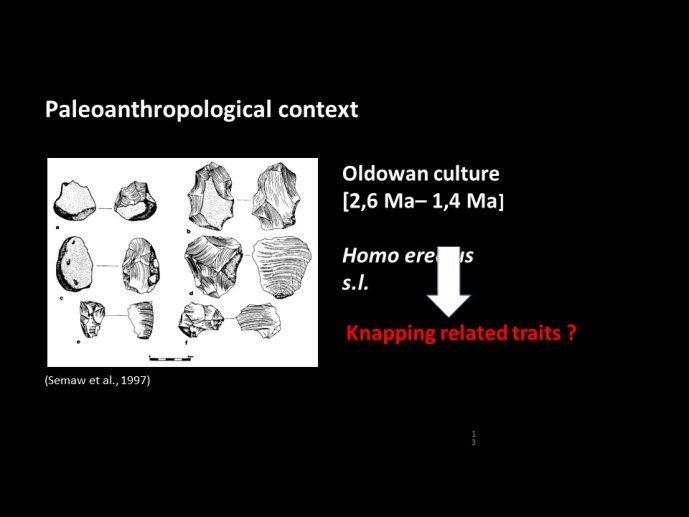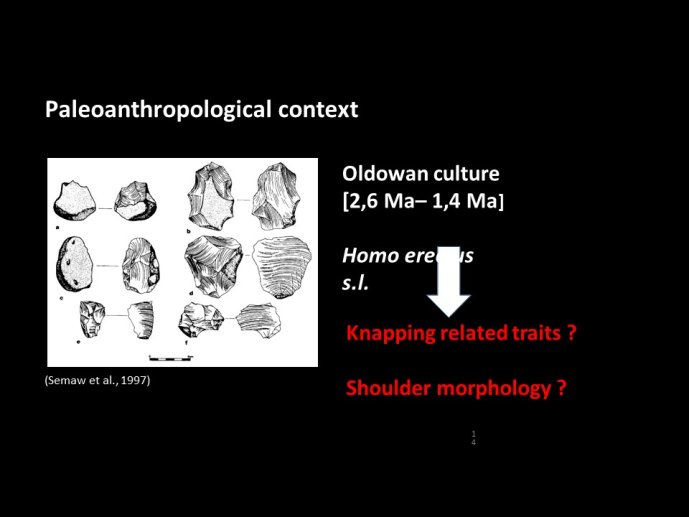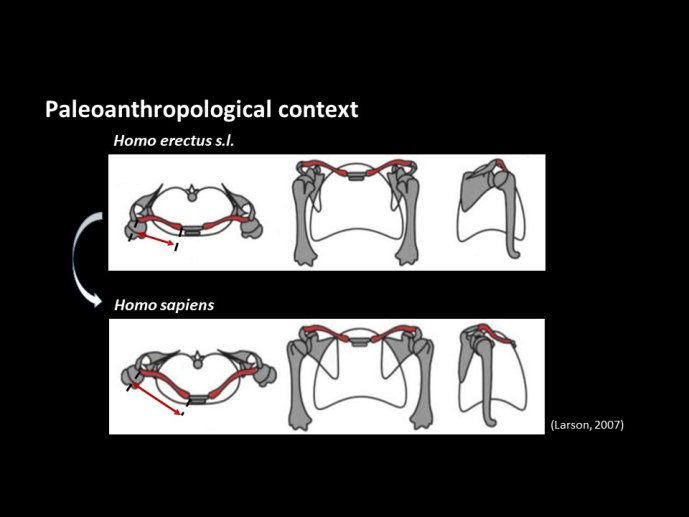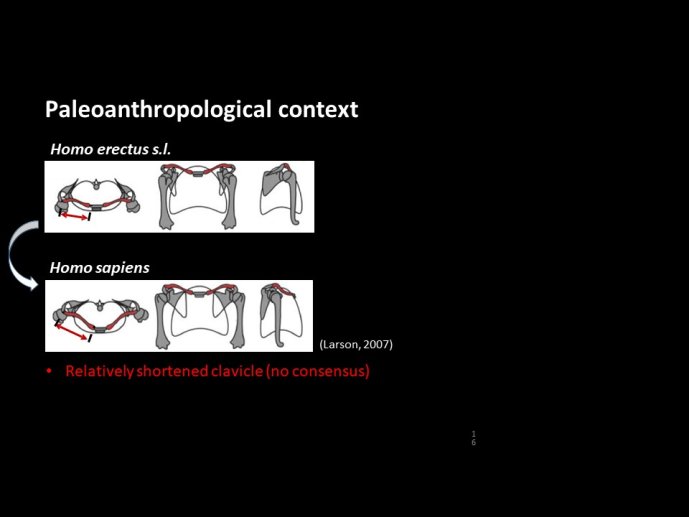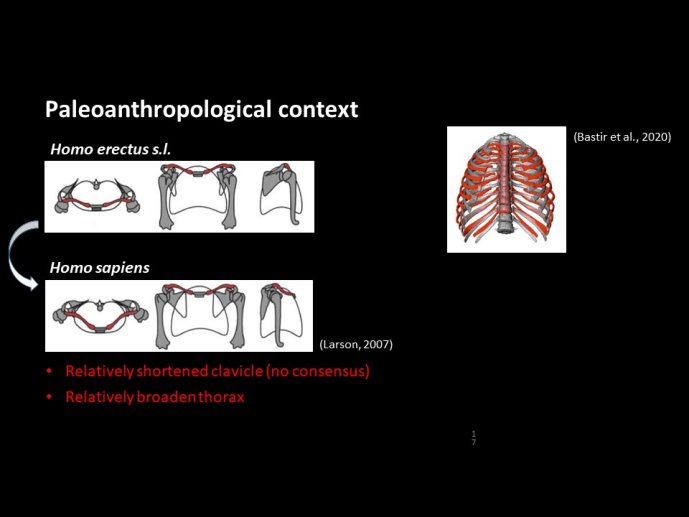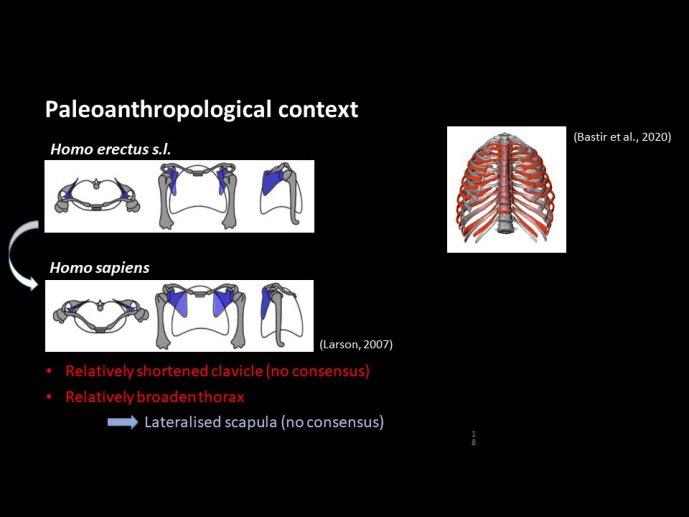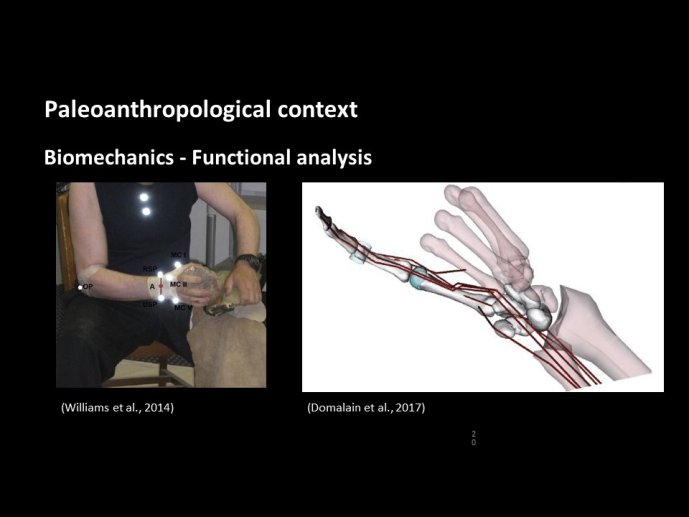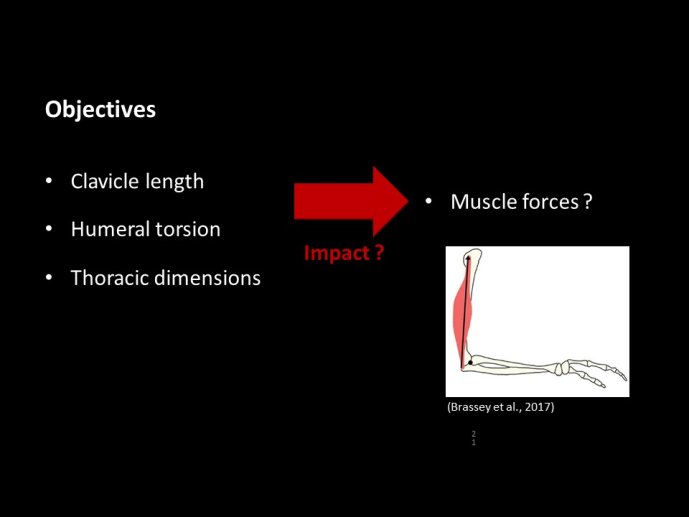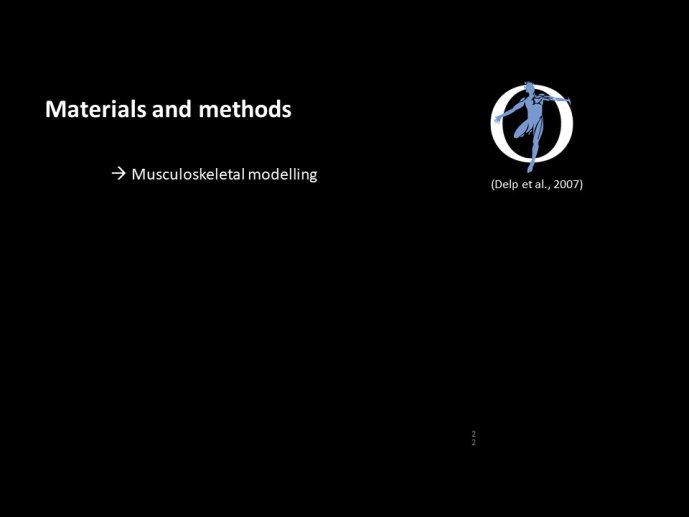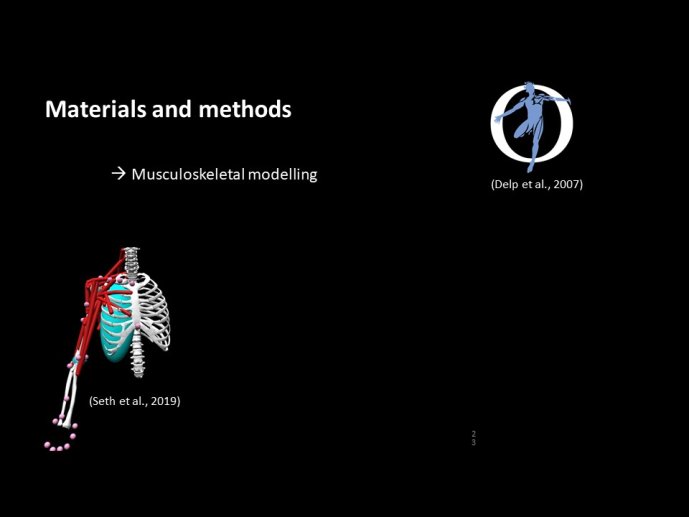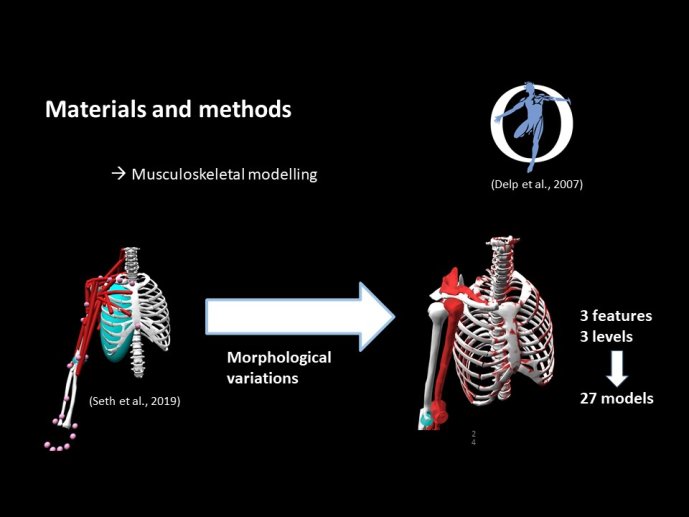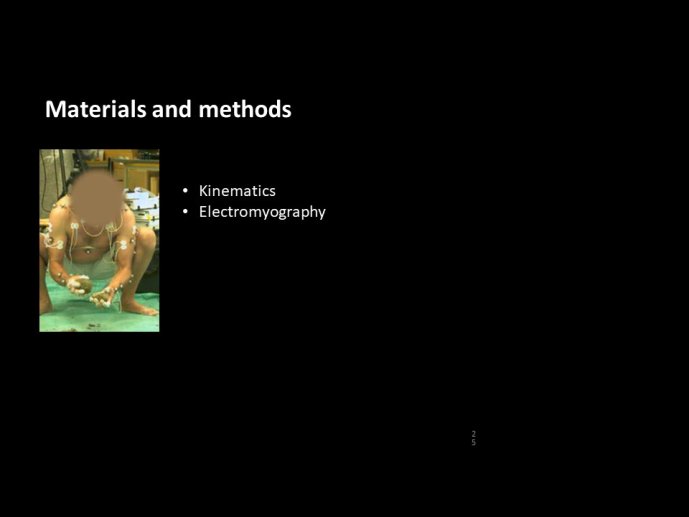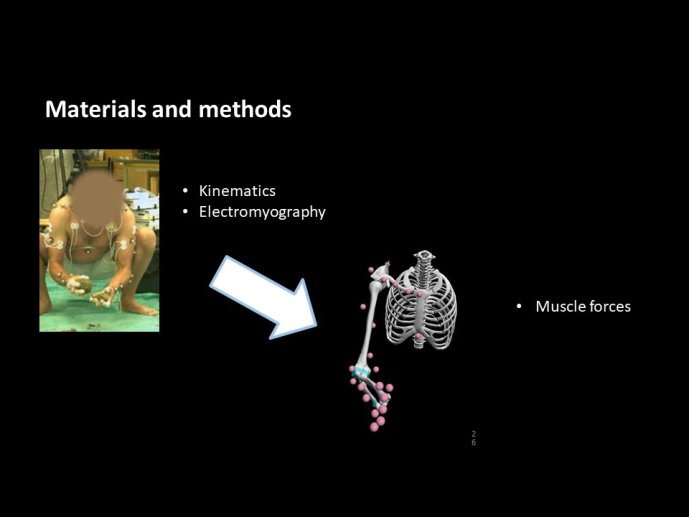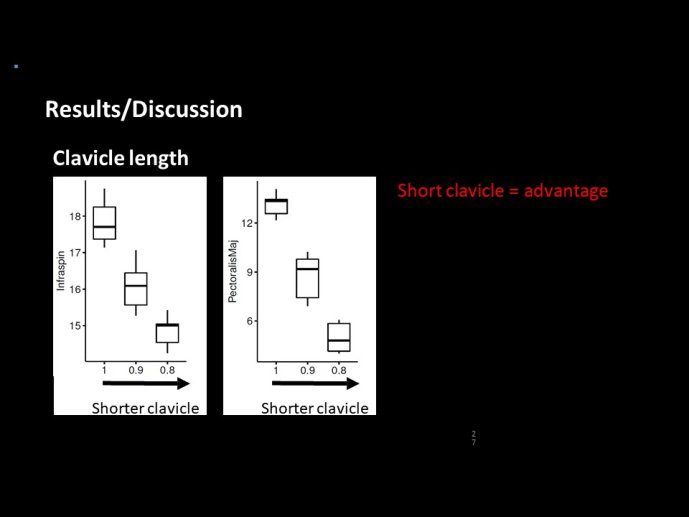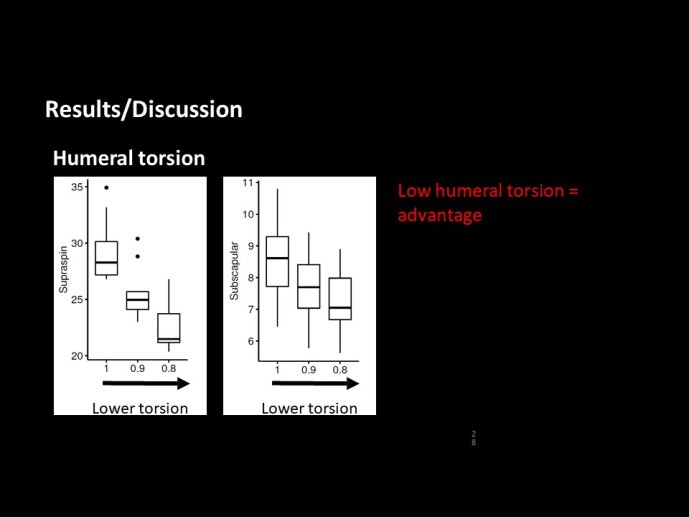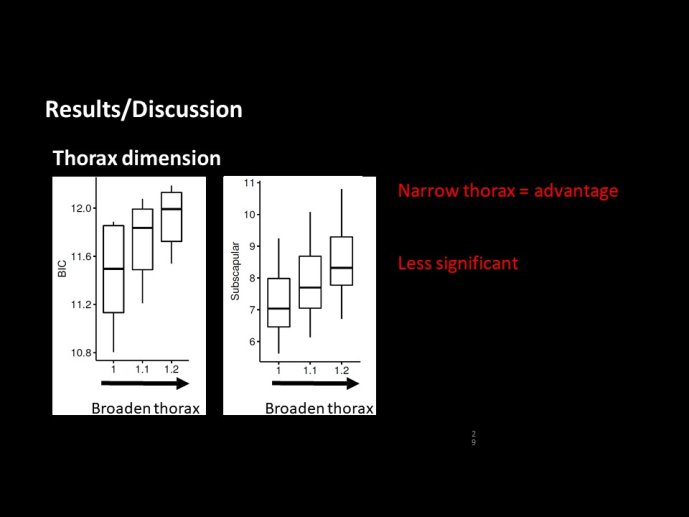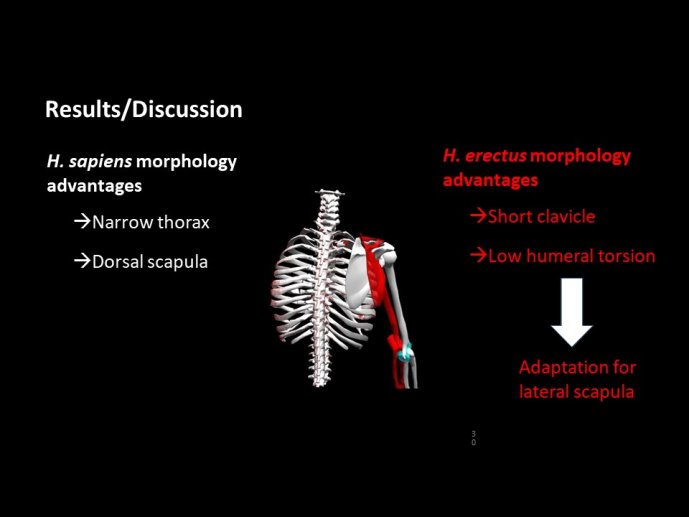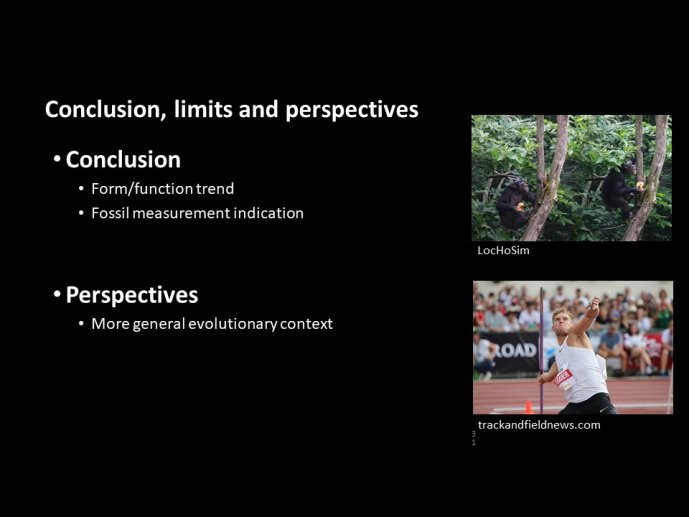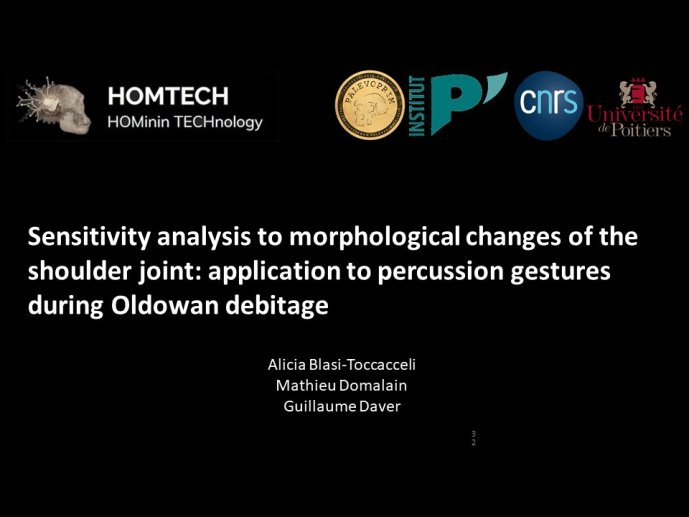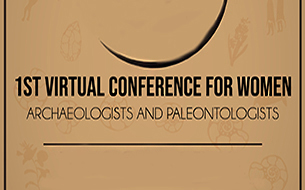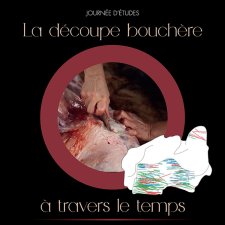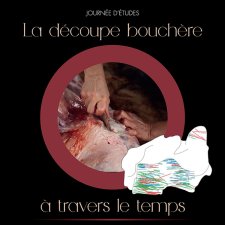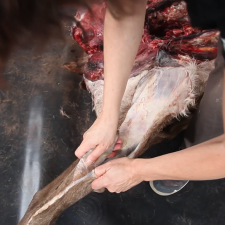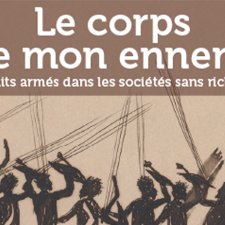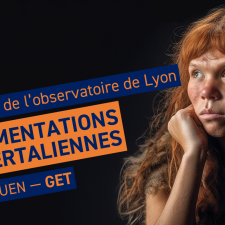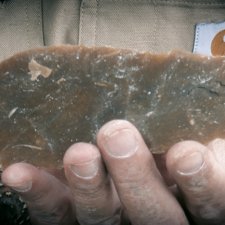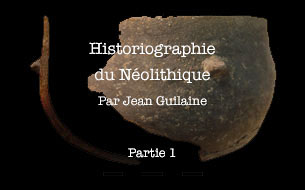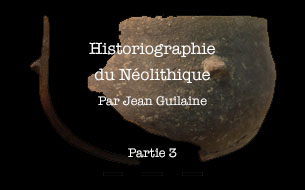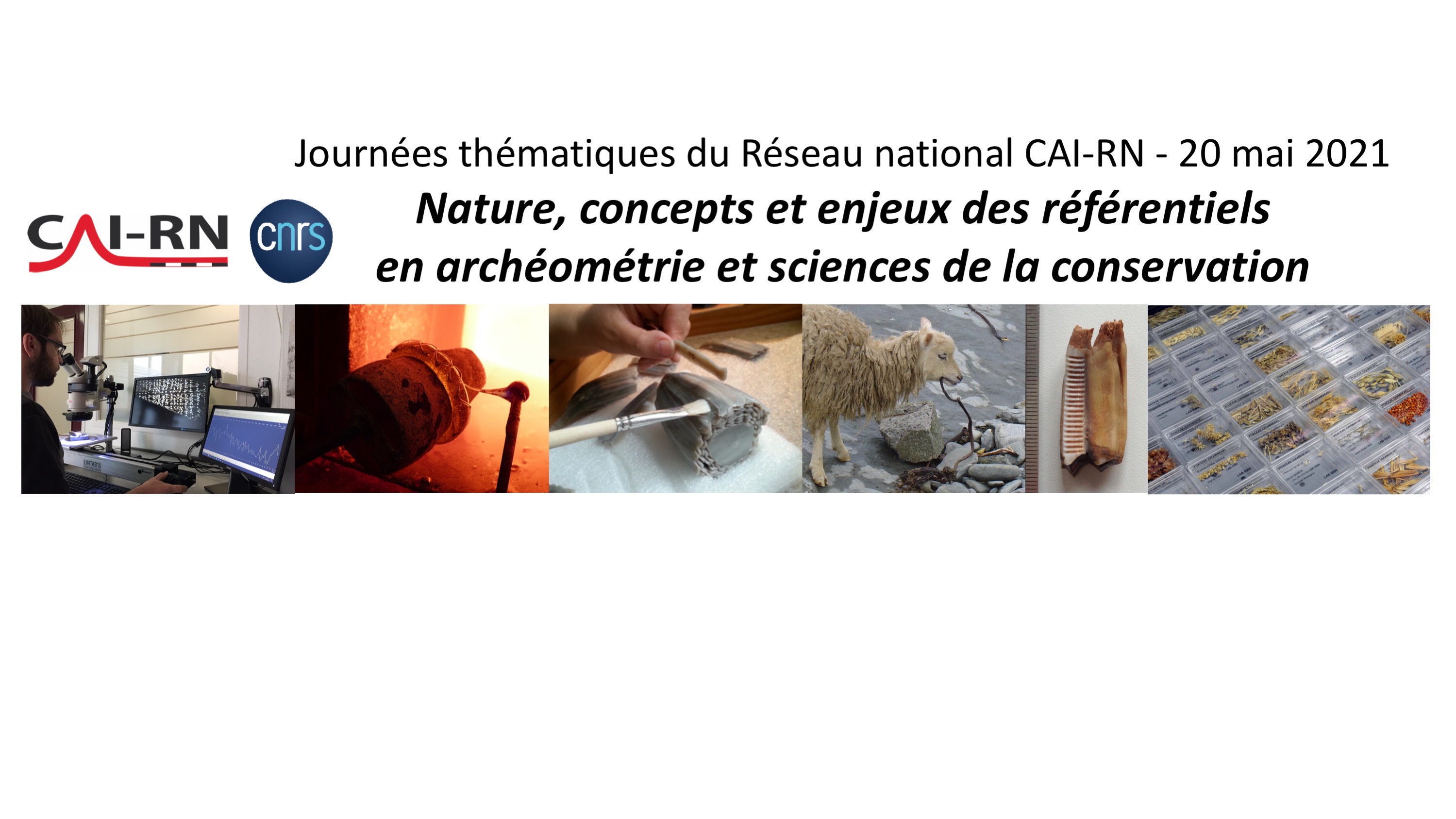Notice
Sensivity analysis to morphological changes of the shoulder joint: application to percussion gestures during Oldowan debitage / Alicia Blasi-Toccacceli
- document 1 document 2 document 3
- niveau 1 niveau 2 niveau 3
Descriptif
Sensivity analysis to morphological changes of the shoulder joint: application to percussion gestures during Oldowan debitage / Alicia Blasi-Toccacceli, in colloque "1st Virtual Conference for Women Archaeologists and Paleontologists. Nouveaux apports à l’étude des populations et environnements passés" organisé par le laboratoire Travaux et Recherches Archéologiques sur les Cultures, les Espaces et les Sociétés (TRACES) de l’Université Toulouse Jean Jaurès et le laboratoire Paléontologie Évolution Paléoécosystèmes (PALEVOPRIM) de l'Université de Poitiers, sous la responsabilité scientifique de Julie Bachellerie, Ana Belén Galán López (Traces), Émilie Berlioz et Margot Louail (Palevoprim). Université Toulouse Jean Jaurès, 8-9 mars 2021.
Session 1: Morphological variability, taxonomy and adaptations.
[Conférence enregistrée à distance].
Although stone tool use and manufacture played a major role during human evolution, the impact of those behaviours on hominin morphology has not yet reached consensus. In this context, the architecture and proportions of the shoulder in early representatives of the genus Homo, which consist mainly of three characteristics (i.e. low humeral torsion, relatively short clavicle and broader thorax which induced a more lateralised scapula), is of prime interest since this joint is hypothesised to have been constrained by those behaviours. To discuss the potential adaptive advantages of the shoulder in early Homo in the context of stone tool making, we assessed the impact of its particular anatomy on muscular forces by mean of musculoskeletal modelling. Metric and angular data collected from extant and extinct hominins and from the literature were used as reference. Upper limb kinematics of free hand lithic debitage (Oldowan context) carried out by an experimental archaeology expert were recorded using an optoelectronic motion capture system (Oqus, Qualisys). The previously characteristic morphological variations of the morphotype of an early Homo member were implemented on a human musculoskeletal model. All the combinations of morphological traits were tested, resulting in 27 models. Muscle forces were computed using inverse kinematics and dynamic optimization. Our results show that the clavicle shortening would disfavour the pectoralis major and subscapularis actions, whereas the thoracic broadening disfavours indirectly subscapularis action for internal humeral rotation at least. The role of lower humeral torsion is less clear: it would favour deltoid and supraspinatus for glenohumeral abduction and disfavour infraspinatus for external rotation. This sensitivity analysis, in this limited frame (muscles selected, morphological traits considered and implementation method) suggests that the relatively short clavicle in relation to the relatively broad thorax of early Homo may disfavour some percussion gestures. More generally, these results exemplify the benefits of biomechanical simulation for a better understanding of the form-function relationships of extinct hominin shoulders.
Si la fabrication et l’utilisation d’outils lithiques ont incontestablement joué un rôle déterminant dans l’évolution des hominines, l’impact de tels comportements sur leur morphologie semble moins faire consensus. Toutefois, il semble que l’architecture et les proportions du complexe de l’épaule chez les premiers représentants du genre Homo aient pu avoir été contraintes par ces comportements. Afin de discuter des potentiels avantages adaptatifs de ces traits morphologiques dans le cadre de production d’outils lithiques, nous avons estimé l’impact de leur variation sur la production des efforts musculaires en prenant pour référence des données métriques et angulaires rapportées chez des hominines actuels et fossiles. Des cinématiques de percussion directe lancée (contexte oldowayen) réalisées par un expert en archéologie expérimentale ont été enregistrées via un système optoélectronique de capture du mouvement (Oqus, Qualisys). Des variations morphologiques jugées caractéristiques du morphotype d’un représentant ancien du genre Homo (faible torsion humérale, brièveté relative de la clavicule, scapula moins dorsalisée, étroitesse du thorax) ont alors été implémentées sur la base d’un modèle musculo-squelettique humain. Les forces musculaires ont ensuite été calculées par application de procédures de cinématique inverse et d’optimisation statique. Les résultats montrent que le raccourcissement relatif de la clavicule optimiserait l’action du muscle biceps dans l’élévation de l’épaule, contrairement à celle du deltoïde et altèrerait l’action du subscapulaire dans la rotation interne. Toutefois, une faible torsion humérale et un thorax étroit semblent favoriser le subscapulaire dans la rotation interne alors qu’une scapula en position moins dorsale n’aurait aucun impact significatif. Cette analyse de sensibilité, dans son cadre restreint (muscles sélectionnés, variations morphologiques considérées et méthode d’implémentation) suggère donc qu’un allongement claviculaire aurait pu faciliter certains gestes de percussion. Plus globalement, ces résultats illustrent l’intérêt d’une étude bio-mécanique pour une meilleure compréhension des relations formes/fonction de l’épaule chez les hominines fossiles.
Mots clés : Hominidés fossiles ; Paléoanthropologie ; Adaptation (biologie), Anatomie fonctionnelle ; Industrie lithique
Thème
Documentation
Références documentaires
BASTIR, Markus, GARCÍA-MARTÍNEZ, Daniel, TORRES-TAMAYO, Nicole, et al. (2020). Rib cage anatomy in Homo erectus suggests a recent evolutionary origin of modern human body shape, Nature ecology & evolution, 9, vol. 4, 1178-1187.
SETH, Ajay, DONG, Meilin, MATIAS, Ricardo, et al. (2019). Muscle contributions to upper-extremity movement and work from a musculoskeletal model of the human shoulder, Frontiers in neurorobotics, vol. 13, p. 90. [En ligne : https://www.frontiersin.org/articles/10.3389/fnbot.2019.00090/full].
DOMALAIN, Mathieu, BERTIN, Anne, DAVER, Guillaume (2017). Was Australopithecus afarensis able to make the Lomekwian stone tools? Towards a realistic biomechanical simulation of hand force capability in fossil hominins and new insights on the role of the fifth digit, Comptes Rendus Palevol, 5-6, vol. 16, 572-584. [En ligne : https://www.sciencedirect.com/science/article/pii/S1631068316301002].
MELILLO, Stephanie M. (2016). The shoulder girdle of KSD-VP-1/1, in In Y. Haile-Selassie and D. F. Su (eds.), The postcranial anatomy of Australopithecus afarensis, Dordrecht, Springer, 113-141.
GRUSS, Laura Tobias, SCHMITT, Daniel (2015). The evolution of the human pelvis: changing adaptations to bipedalism, obstetrics and thermoregulation, Philosophical Transactions of the Royal Society B, 1663, vol. 370, 13 p. [En ligne : https://royalsocietypublishing.org/doi/pdf/10.1098/rstb.2014.0063].
BLEMKER, Silvia S., ASAKAWA, Deanna S., DELP, Scott L., et al. (2007). Image‐based musculoskeletal modeling: applications, advances, and future opportunities, Journal of Magnetic Resonance Imaging (JMRI), 2, vol. 25, 441-451. [En ligne : https://onlinelibrary.wiley.com/doi/full/10.1002/jmri.20805].
LARSON, Susan G., JUNGERS, William L., MORWOOD, Michael J., et al. (2007). Homo floresiensis and the evolution of the hominin shoulder, Journal of Human Evolution, 6, vol. 53, 718-731.
FLEAGLE, John, G. (1999). Primate adaptation and evolution. San Diego, Academic Press, 596 p.
SEMAW, Sileshi, RENNE, Paul, HARRIS, John WK, et al. (1997). 2.5-million-year-old stone tools from Gona, Ethiopia. Nature, 6614, vol. 385, 333-336. [En ligne : https://www.nature.com/articles/385333a0].
Dans la même collection
-
"Ouranopithecus macedoniensis" (late Miocene, Greece): analysis of mandibular fragments using …
IoannidouMelaniaOuranopithecus macedoniensis (late Miocene, Greece): analysis of mandibular fragments using 3D geometric morphometrics / Melania Ioannidou, in colloque "1st Virtual Conference for Women
-
Comminution capabilities of extant and fossil anthropoids during molar intercuspation: a preliminar…
WalkerAxelle E. C.Comminution capabilities of extant and fossil anthropoids during molar intercuspation: a preliminary experiment using a chewing simulator / Axelle E. C. Walker, in colloque "1st Virtual Conference for
-
New sperm whale cranium from the late Miocene and a revised family attribution for the small crown …
AlfsenApollineNew sperm whale cranium from the late Miocene and a revised family attribution for the small crown physeteroid Thalassocetus / Apolline Alfsen, in colloque "1st Virtual Conference for Women
-
What is shaping the brain? A perspective on brain size evolution in carnivorans / Margot…
MichaudMargotWhat is shaping the brain? A perspective on brain size evolution in carnivorans / Margot Michaud, in colloque "1st Virtual Conference for Women Archaeologists and Paleontologists. Nouveaux
-
Postnatal shape changes in the rodent mandible at a macroevolutionary scale / Morgane Dubied
DubiedMorganePostnatal shape changes in the rodent mandible at a macroevolutionary scale / Morgane Dubied, in colloque "1st Virtual Conference for Women Archaeologists and Paleontologists. Nouveaux apports à l
-
Cranial vault healing in modern humans: input of archaeological and clinical data / Aliéno…
LepetitAliénorCranial vault healing in modern humans: input of archaeological and clinical data / Aliénor Lepetit, in colloque "1st Virtual Conference for Women Archaeologists and Paleontologists. Nouveaux
-
A transdisciplinary approach to reconstruct the Nilotic socio-ecosystem in Luxor west bank during t…
NicatoreGiuliaA transdisciplinary approach to reconstruct the Nilotic socio-ecosystem in Luxor west bank during the Ptolemaic period (3rd-1st centuries BC.) / Giulia Nicatore, in colloque "1st Virtual Conference
-
Tracing Human Ancestral Migration from its Symbiotic Bacteria / Alexia Nguyen Trung
Nguyen TrungAlexiaTracing Human Ancestral Migration from its Symbiotic Bacteria / Alexia Nguyen Trung, in colloque "1st Virtual Conference for Women Archaeologists and Paleontologists. Nouveaux apports à l’étude des
-
From monoliths to megaliths: a new approach on the megalithic burials of southwestern France / Bosc…
BoscusSarahFrom monoliths to megaliths: a new approach on the megalithic burials of southwestern France / Boscus Sarah, in colloque "1st Virtual Conference for Women Archaeologists and Paleontologists. Nouveaux
-
Foragers and their symbolic landscape. Understanding the role of rock art in the territoriality of …
JobardLéaForagers and their symbolic landscape. Understanding the role of rock art in the territoriality of Later Stone Age Matobo populations / Léa Jobard, in colloque "1st Virtual Conference for Women
-
Towards a tracking of past bird seasonal migrations through geological times: what could isotopes t…
DuhamelAnaïsTowards a tracking of past bird seasonal migrations through geological times: what could isotopes tell us? / Anaïs Duhamel, in colloque "1st Virtual Conference for Women Archaeologists and
-
Study of human group behaviors during the Last Glacial Maximum in the east Carpathian area from zoo…
DemayLaëtitiaStudy of human group behaviors during the Last Glacial Maximum in the east Carpathian area from zooarchaeological remains / Laëticia Demay, in colloque "1st Virtual Conference for Women Archaeologists
Sur le même thème
-
Décharner, mettre en pièces, fracturer le gibier au Paléolithique : même menu, mêmes façons de fair…
SoulierMarie-CécileBirousteClémentCostamagnoSandrineÀ destination principalement des étudiantes et étudiants en archéologie ainsi que des archéozoologues, cette journée visait à mettre en lumière la diversité des pratiques de boucherie à travers le
-
Mes os sans stries… le partage et la découpe au Mésolithique
GardeurMarineMallyeJean-BaptisteÀ destination principalement des étudiantes et étudiants en archéologie ainsi que des archéozoologues, cette journée visait à mettre en lumière la diversité des pratiques de boucherie à travers le
-
Carcasses de cerf et feuilles de laurier. Session de boucherie expérimentale octobre 2023
BirousteClémentMarquebielleBenjaminCe film porte sur l’archéologie expérimentale, et plus particulièrement sur une découpe de cerf avec des outils en silex (des « feuilles de laurier » caractéristiques d’une culture archéologique du
-
Violences interpersonnelles dans la Vallée du Nil à la Préhistoire
CrevecoeurIsabelleLes ensembles funéraires nous renseignent sur la biologie des sociétés passées, leurs relations sociales et leurs comportements rituels et symboliques. Ils peuvent également nous permettre d’examiner
-
Véganes ou cannibales : le casse-tête des alimentations néandertaliennes
JaouenKlerviaDepuis quelques années, les analyses isotopiques nouvellement mises au point ont permis d'explorer en profondeur l'alimentation néandertalienne, révélant des informations précieuses sur leur régime
-
Démonstration de taille de silex : façonnage d'une « feuille de laurier » solutréenne
BiardMiguelL’étude des populations préhistoriques passe par l’analyse de leur culture matérielle parmi lesquels les outils en silex constituent une importante source d’informations. La démarche expérimentale
-
Historiographie du Néolithique. 1 / Jean Guilaine
GuilaineJeanCe séminaire relate la mutation de la recherche préhistorique au cours des quatre dernières décennies, et plus précisément l’histoire de la recherche néolithique française qui est celle d’une
-
Historiographie du Néolithique. 3 / Jean Guilaine
GuilaineJeanHistoriographie du Néolithique. 3 / Jean Guilaine, in "Derniers chasseurs-cueilleurs et premiers paysans : la fin de la Préhistoire en Europe", webdocumentaire réalisé dans le cadre des appels à
-
E. HERRSCHER et L. MION, Référentiels isotopiques et paléoalimentation humaine : un doux rêve arché…
Référentiels isotopiques et paléoalimentation humaine : un doux rêve archéologique ? Estelle Herrscher et Leïa Mion Aix Marseille Université, CNRS, Ministère de la Culture, LAMPEA, Aix-en
-
E.-M. GEIGL, L’importance des référentiels en paléogénomique
Eva-Maria GEIGL(1), L’importance des référentiels en paléogénomique (1) Université de Paris, CNRS, Institut Jacques Monod L’analyse des génomes anciens préservés dans les vestiges biologiques apporte
-
"Ouranopithecus macedoniensis" (late Miocene, Greece): analysis of mandibular fragments using …
IoannidouMelaniaOuranopithecus macedoniensis (late Miocene, Greece): analysis of mandibular fragments using 3D geometric morphometrics / Melania Ioannidou, in colloque "1st Virtual Conference for Women
-
Cranial vault healing in modern humans: input of archaeological and clinical data / Aliéno…
LepetitAliénorCranial vault healing in modern humans: input of archaeological and clinical data / Aliénor Lepetit, in colloque "1st Virtual Conference for Women Archaeologists and Paleontologists. Nouveaux

